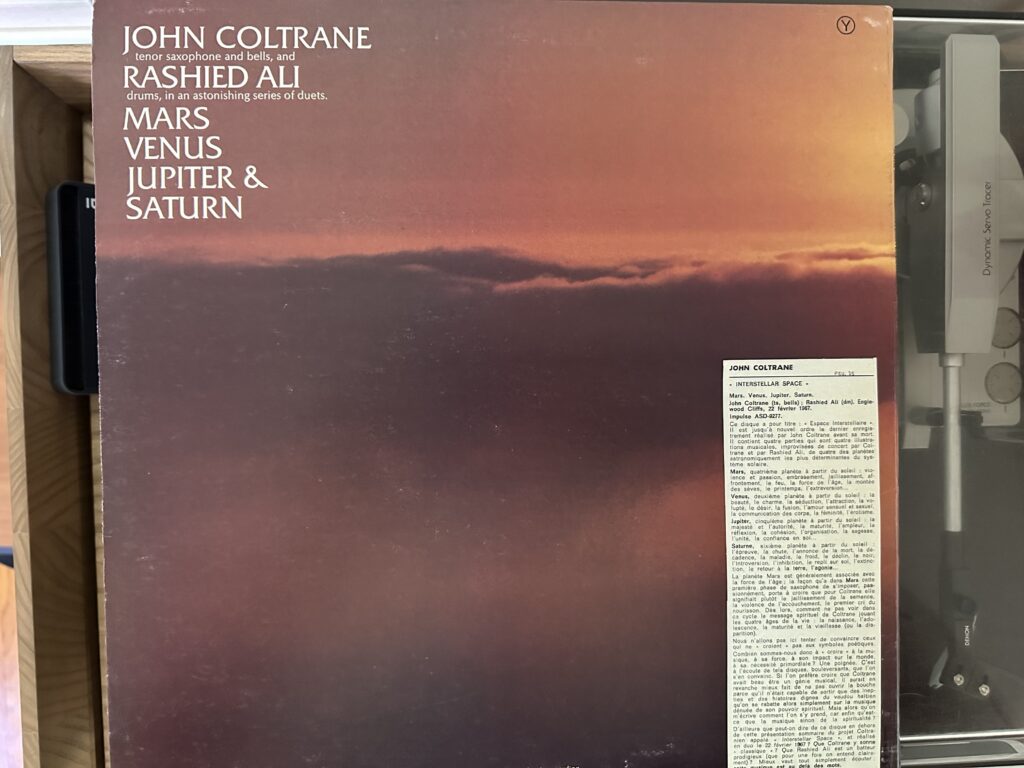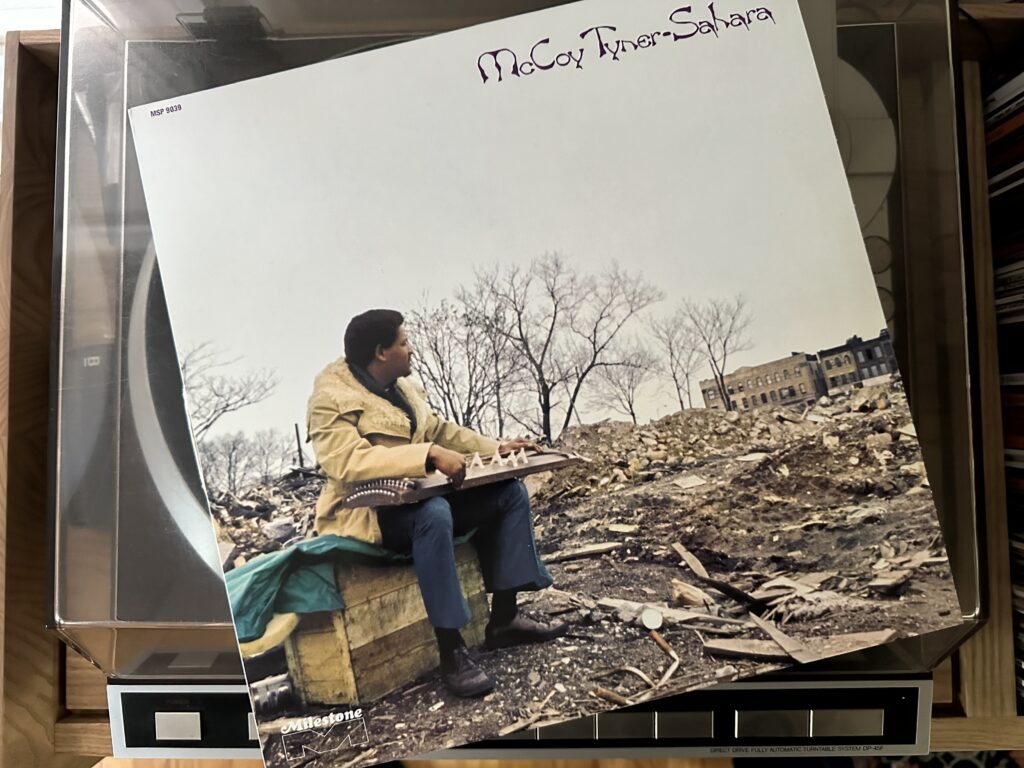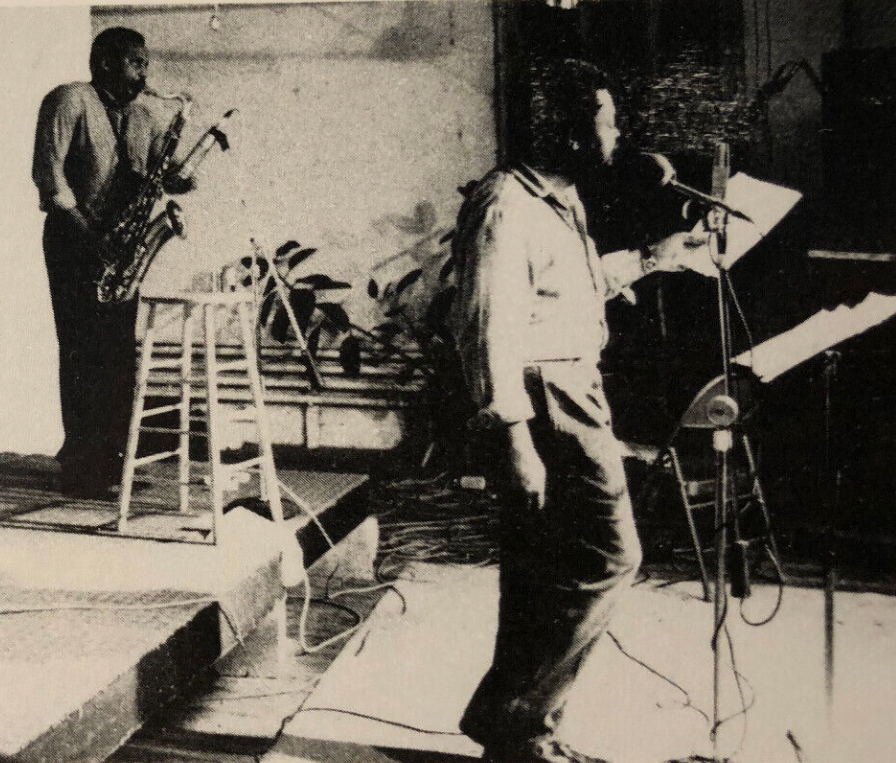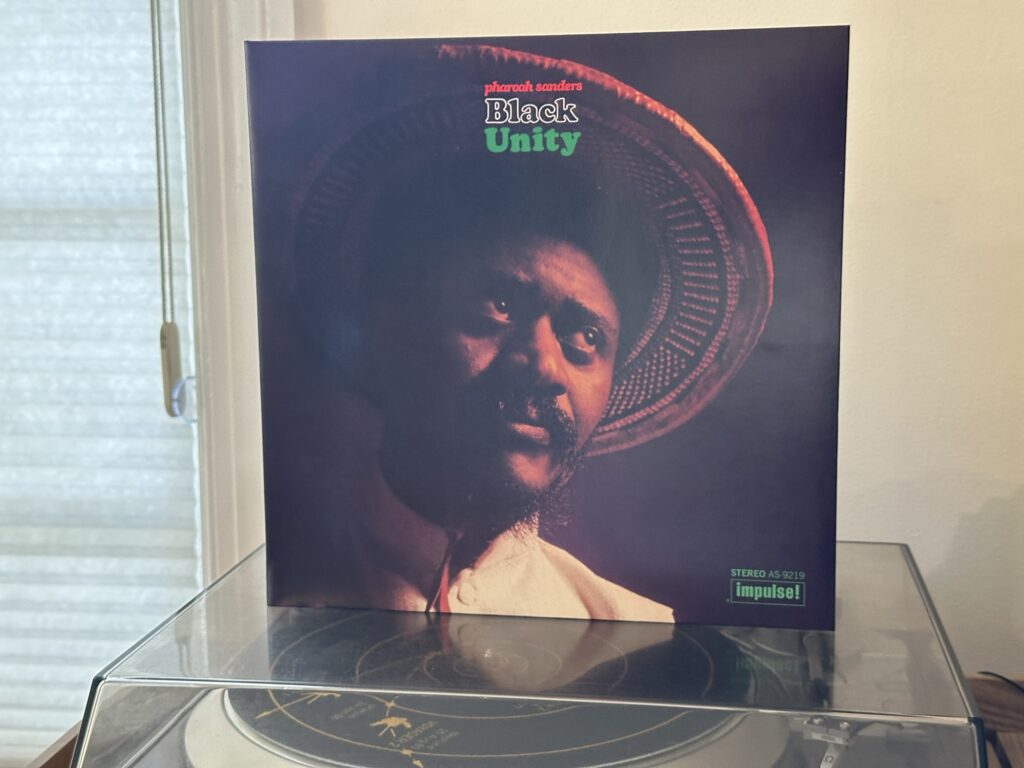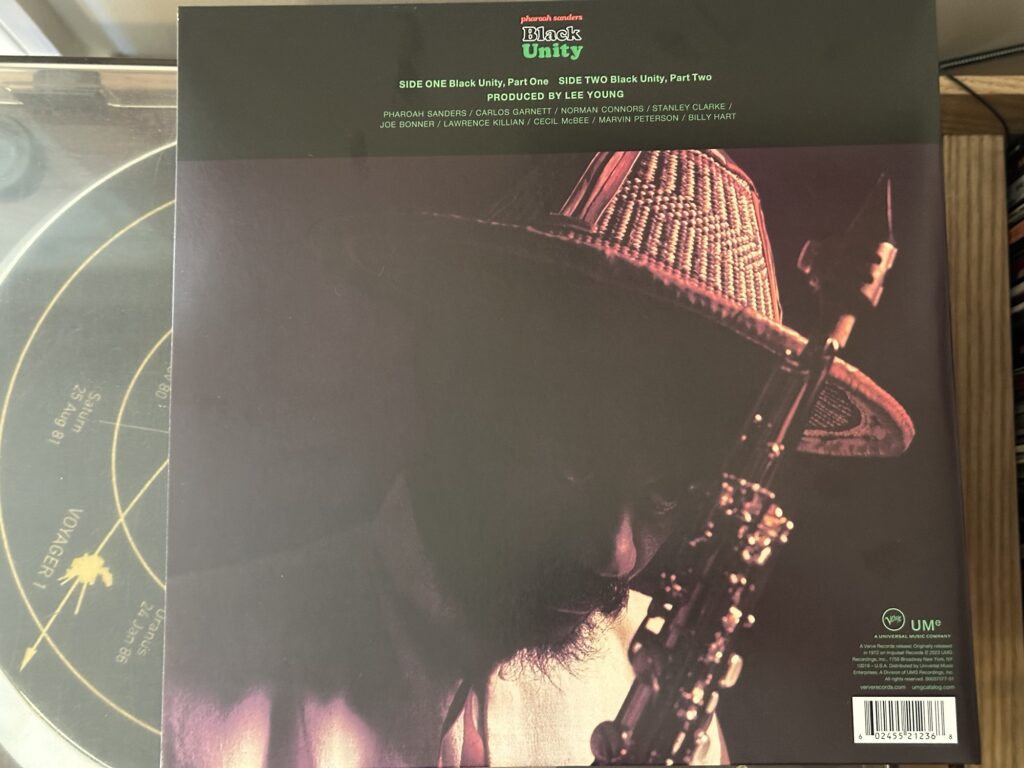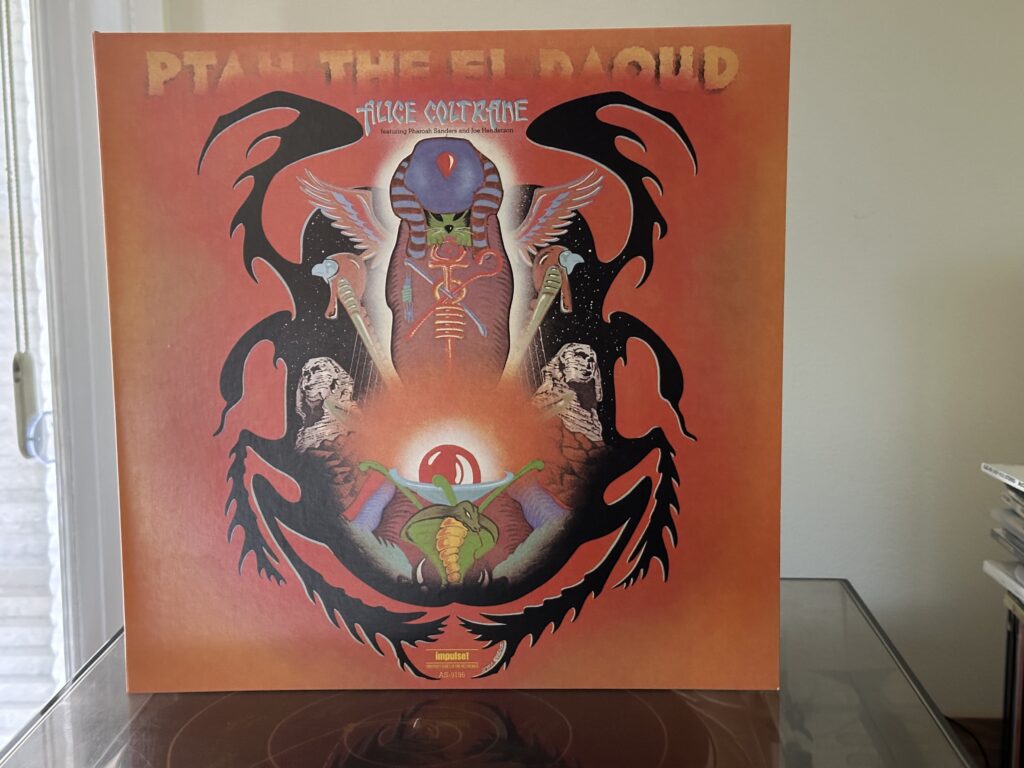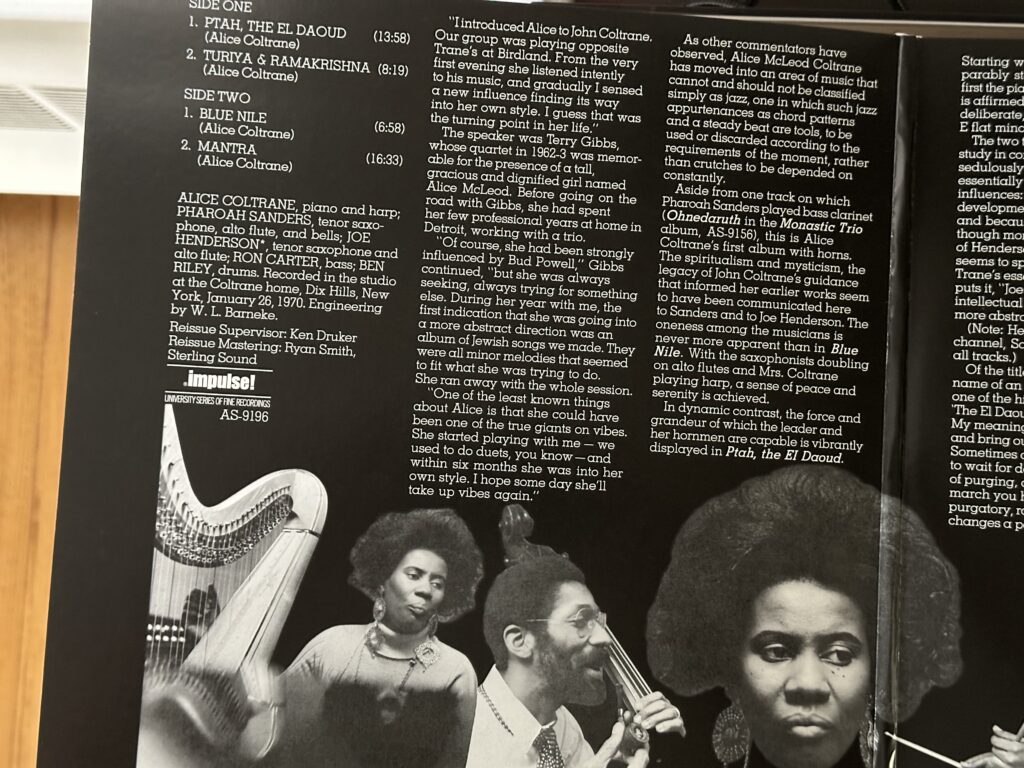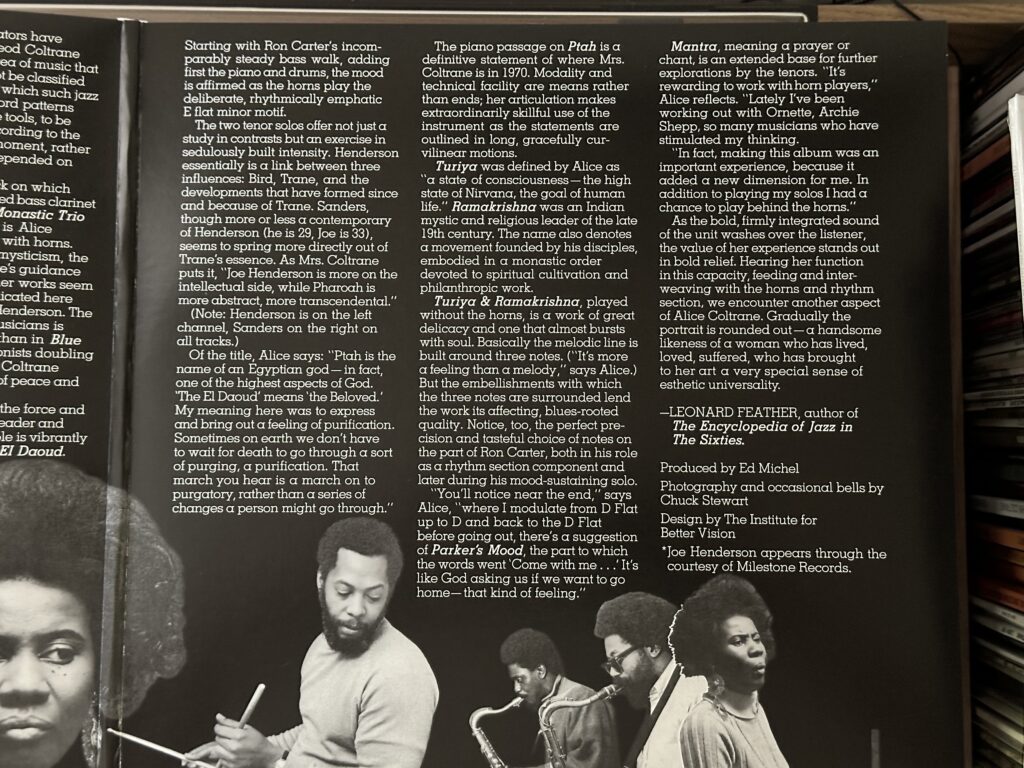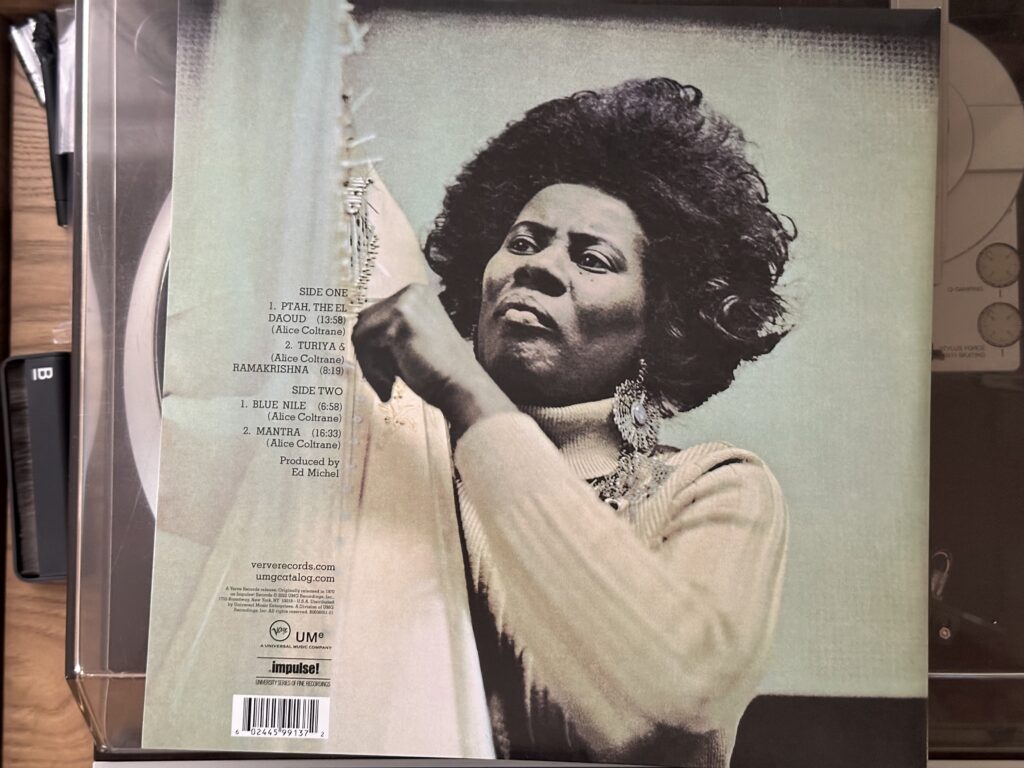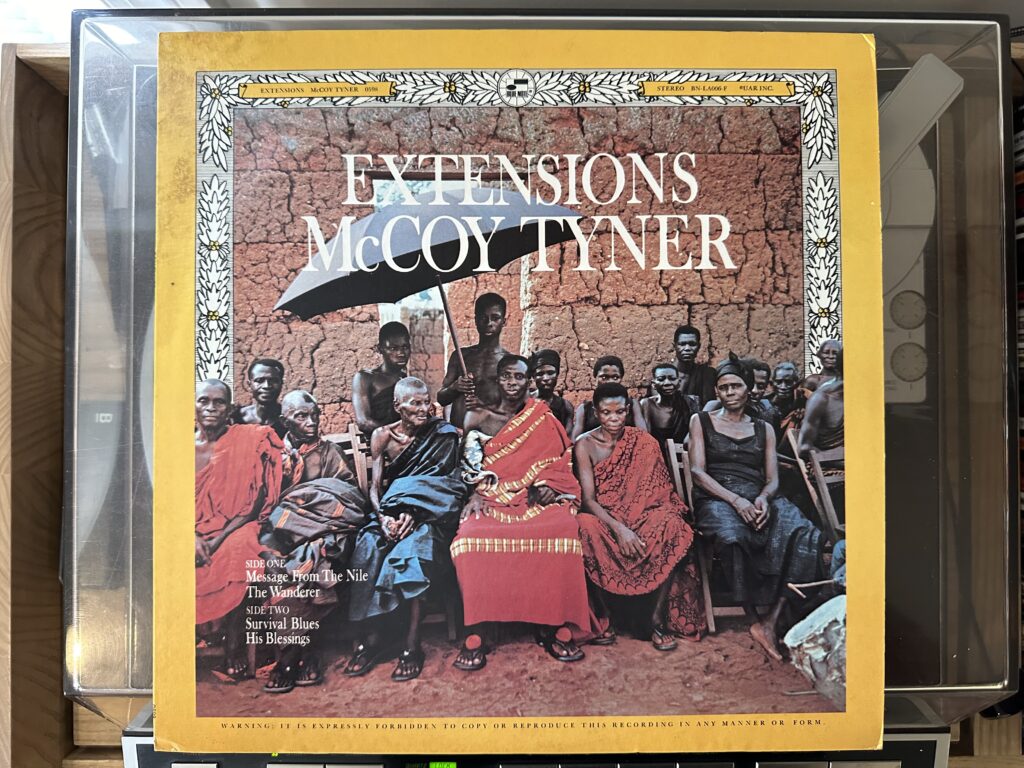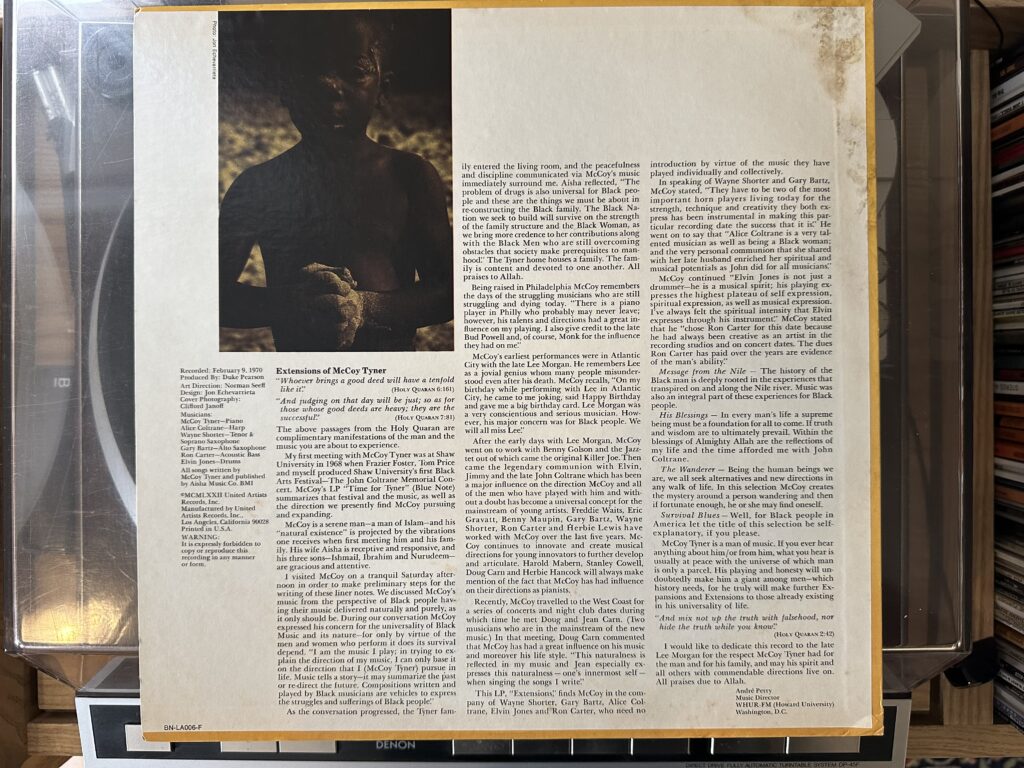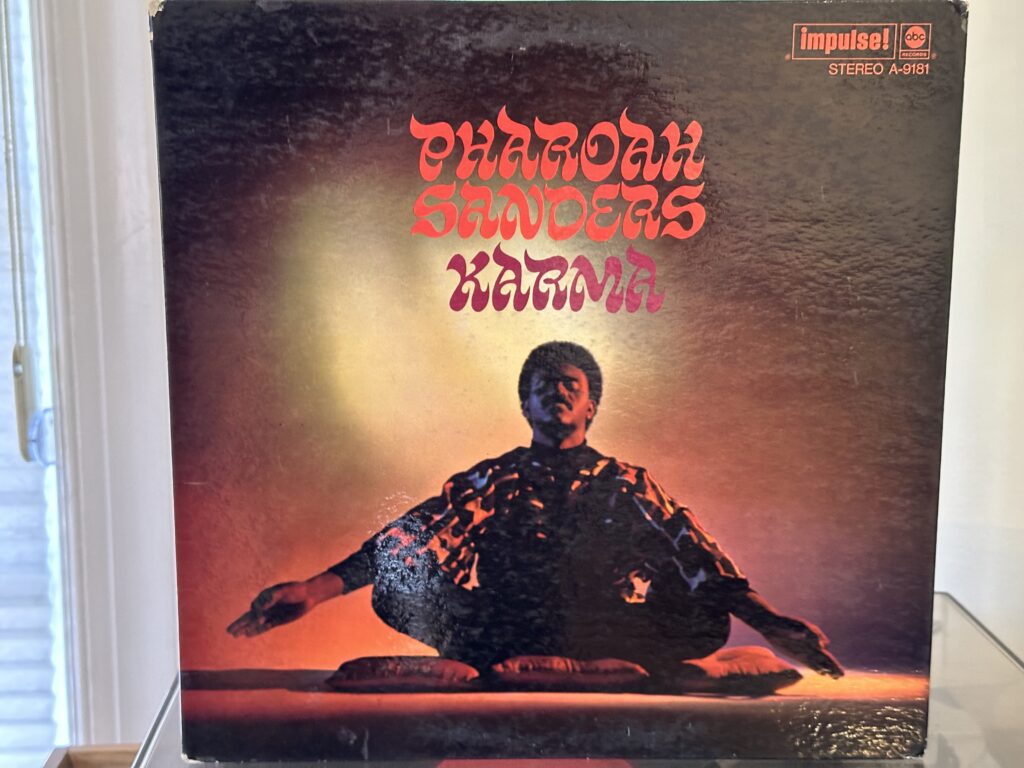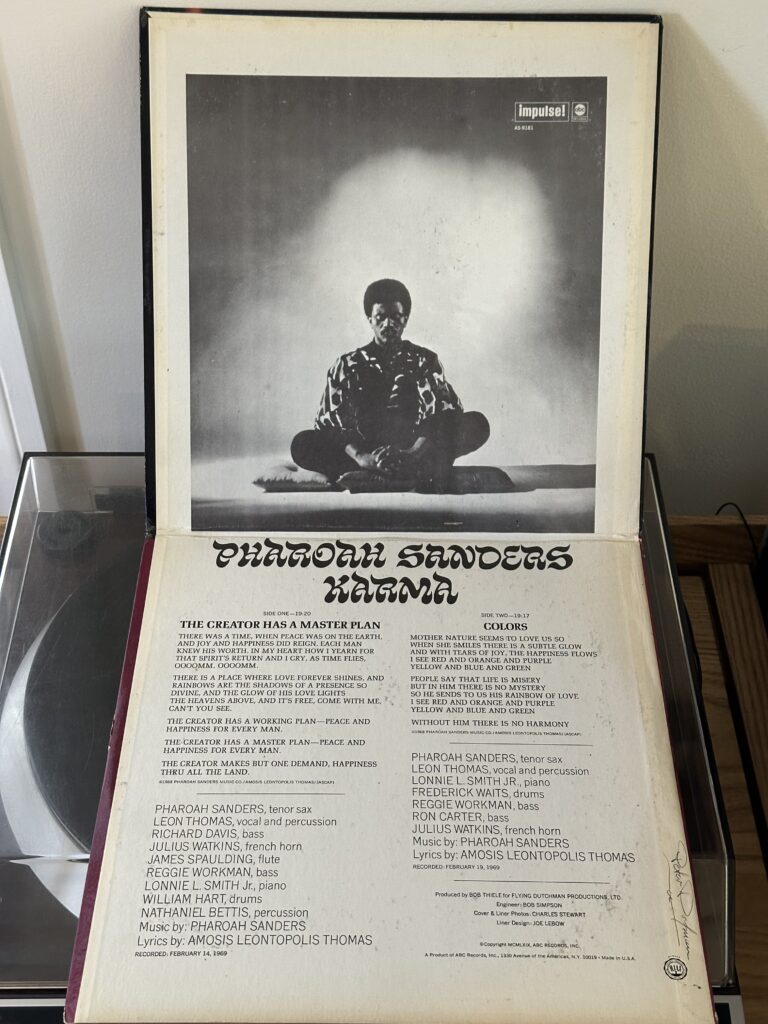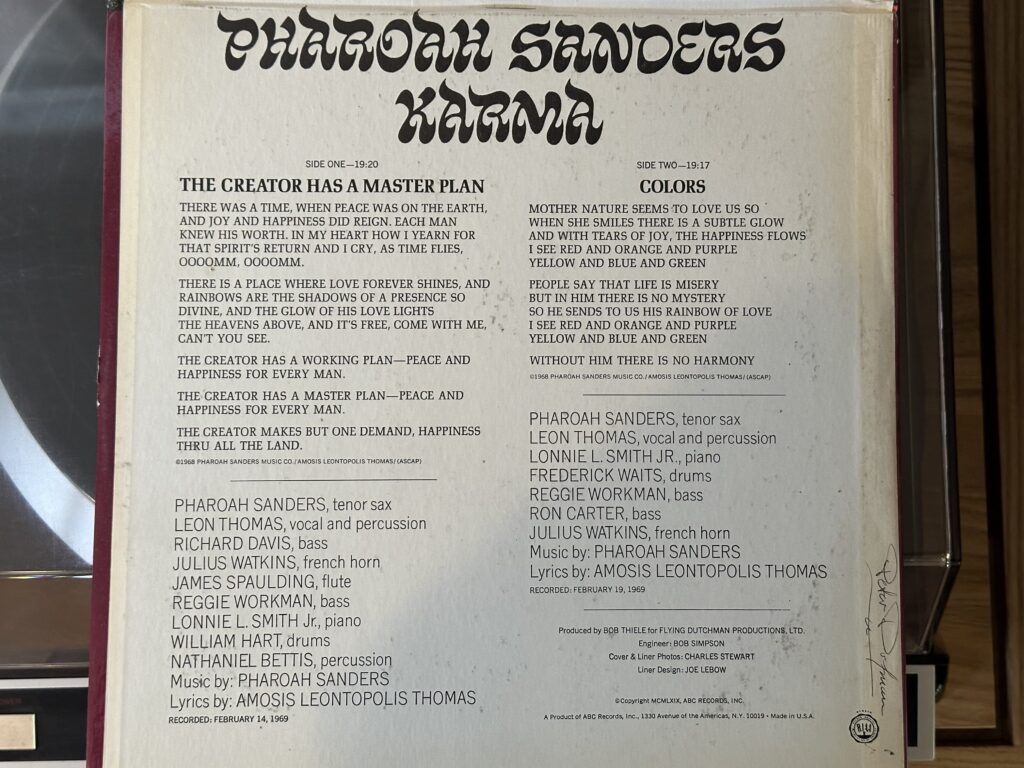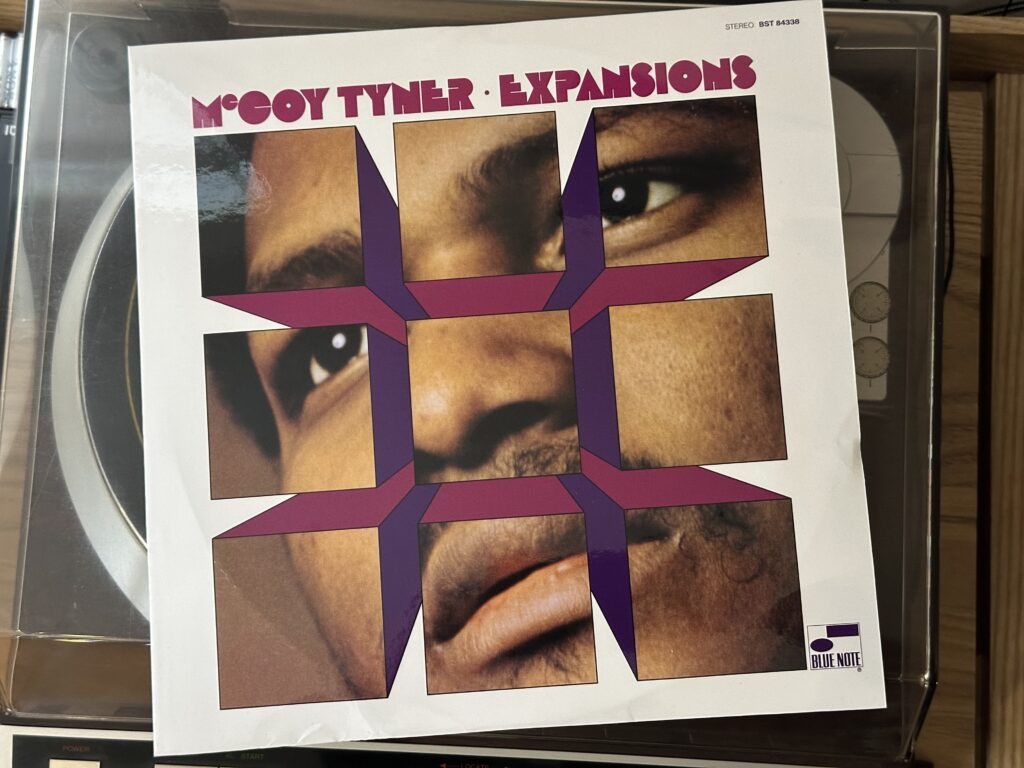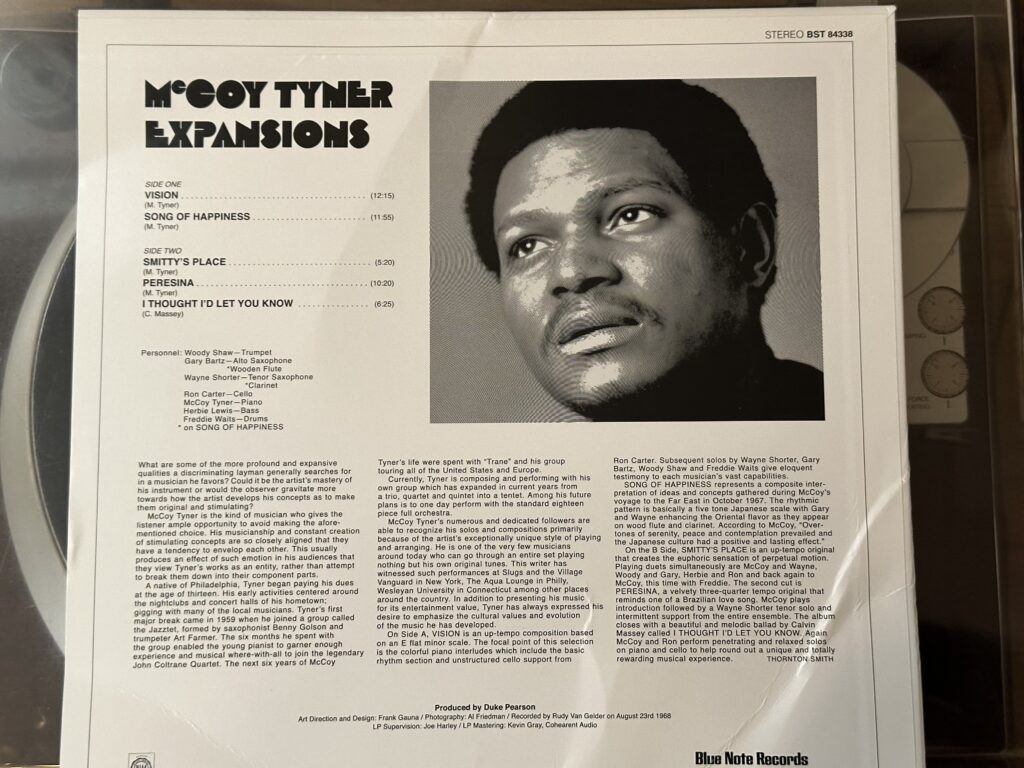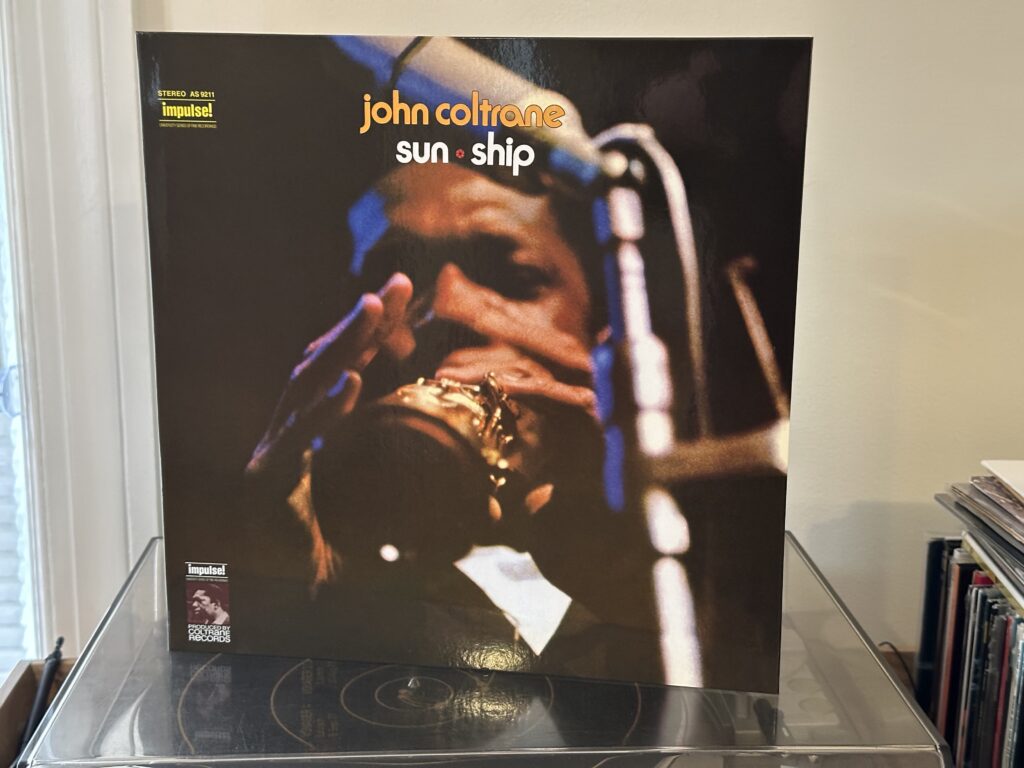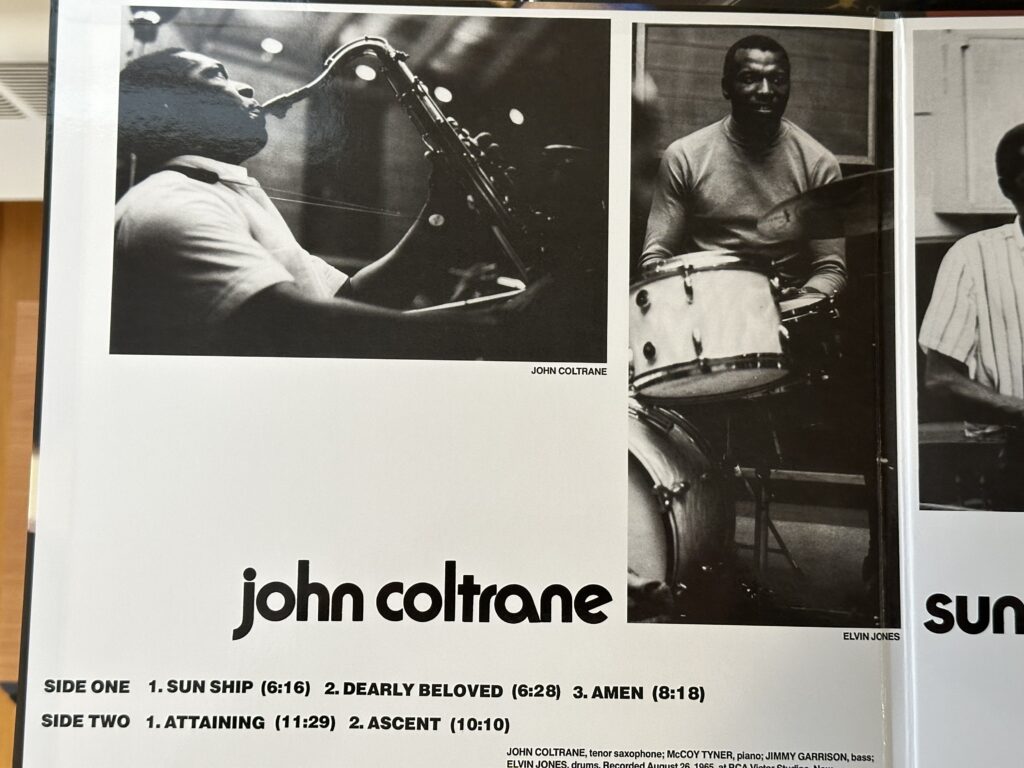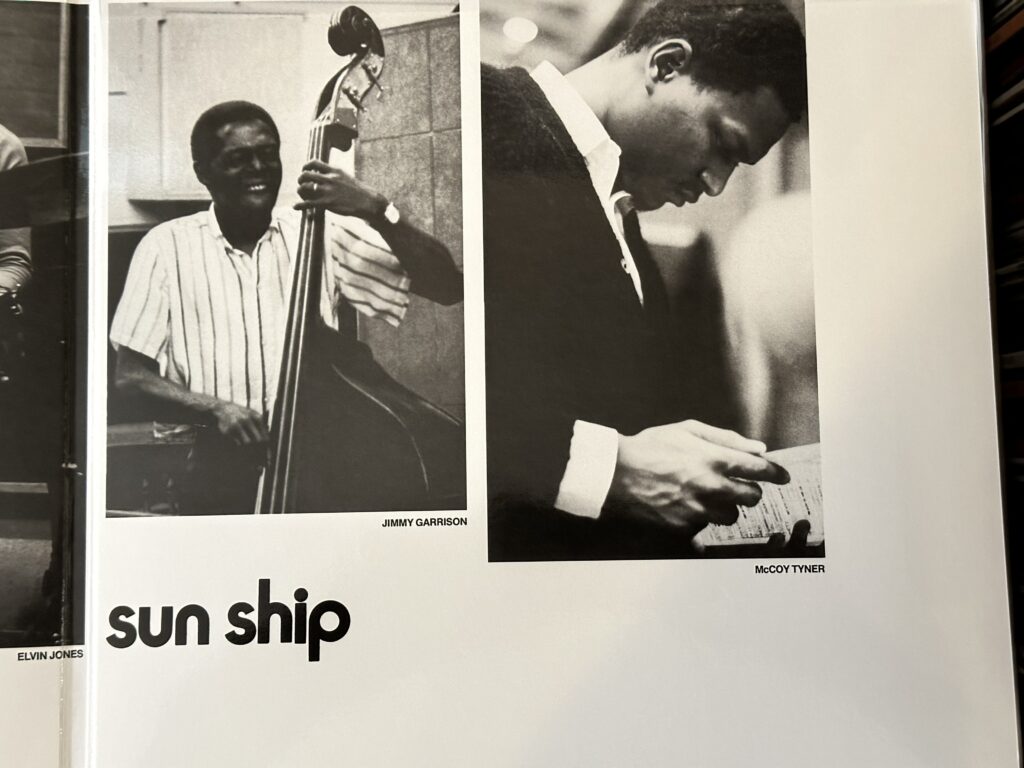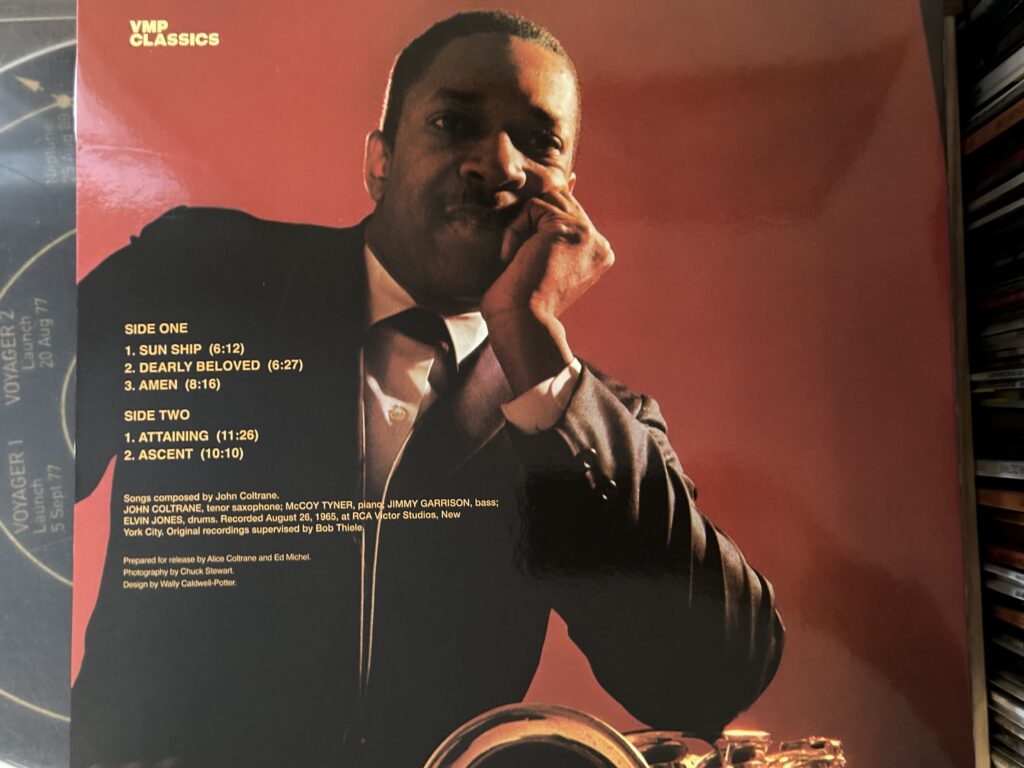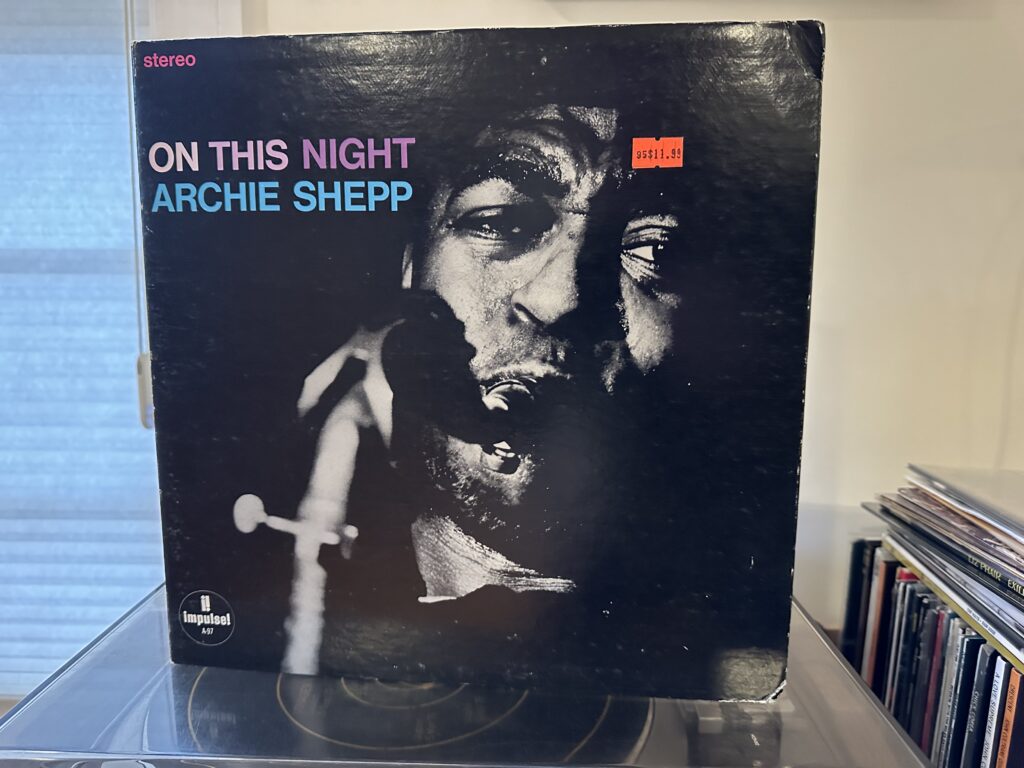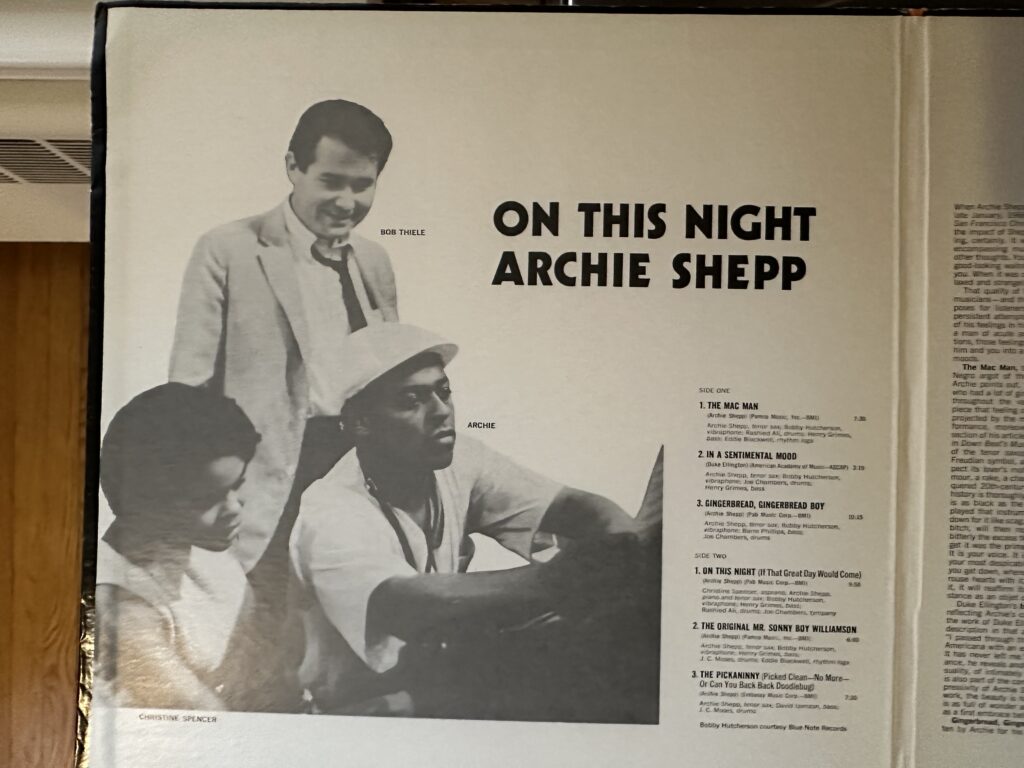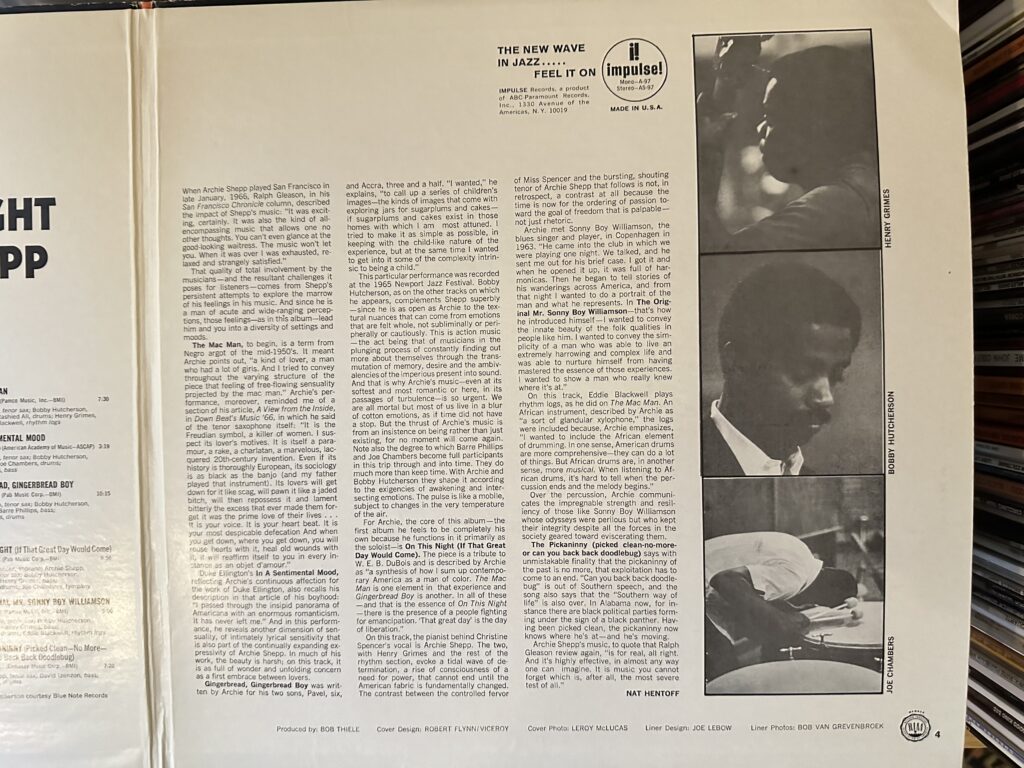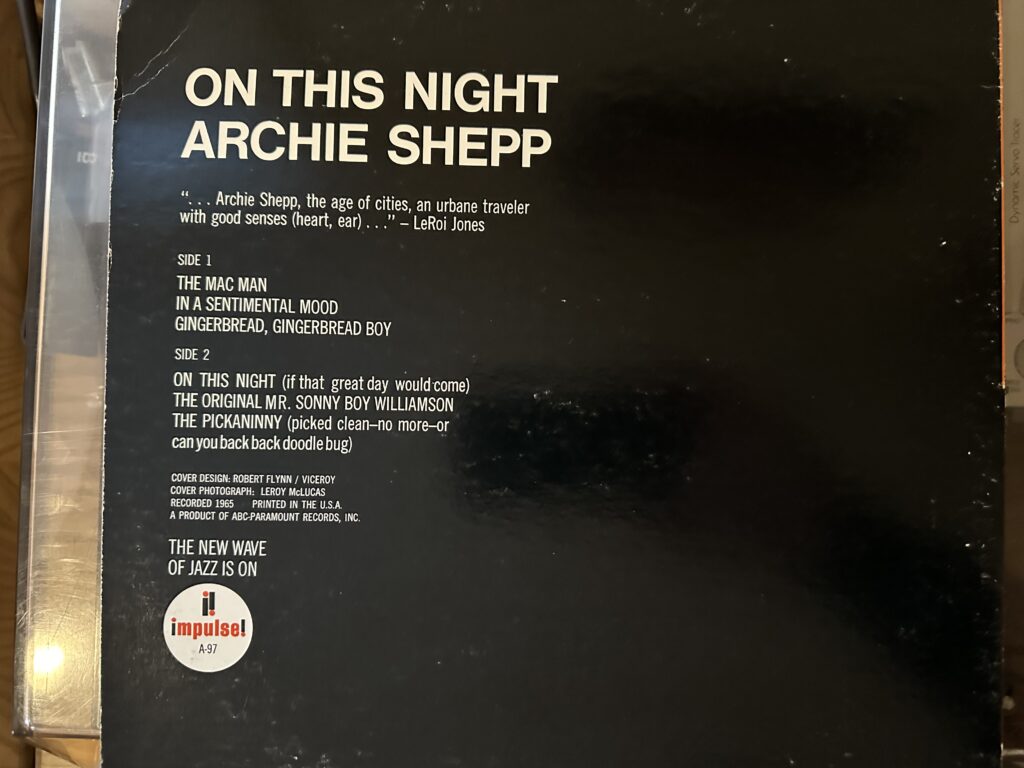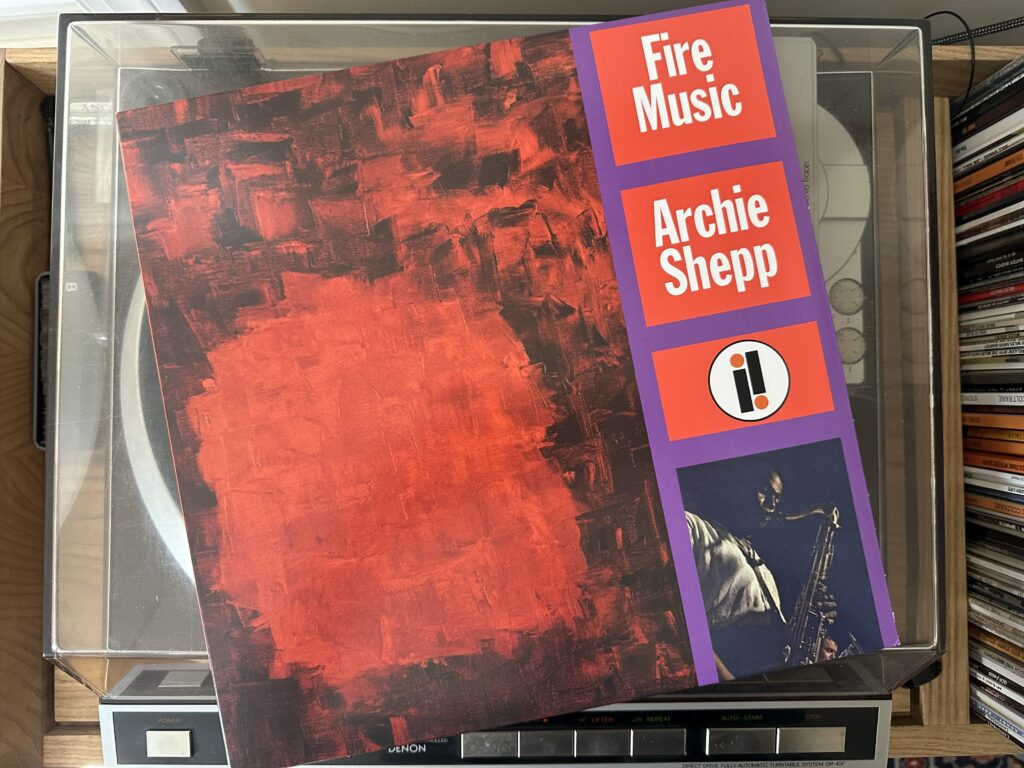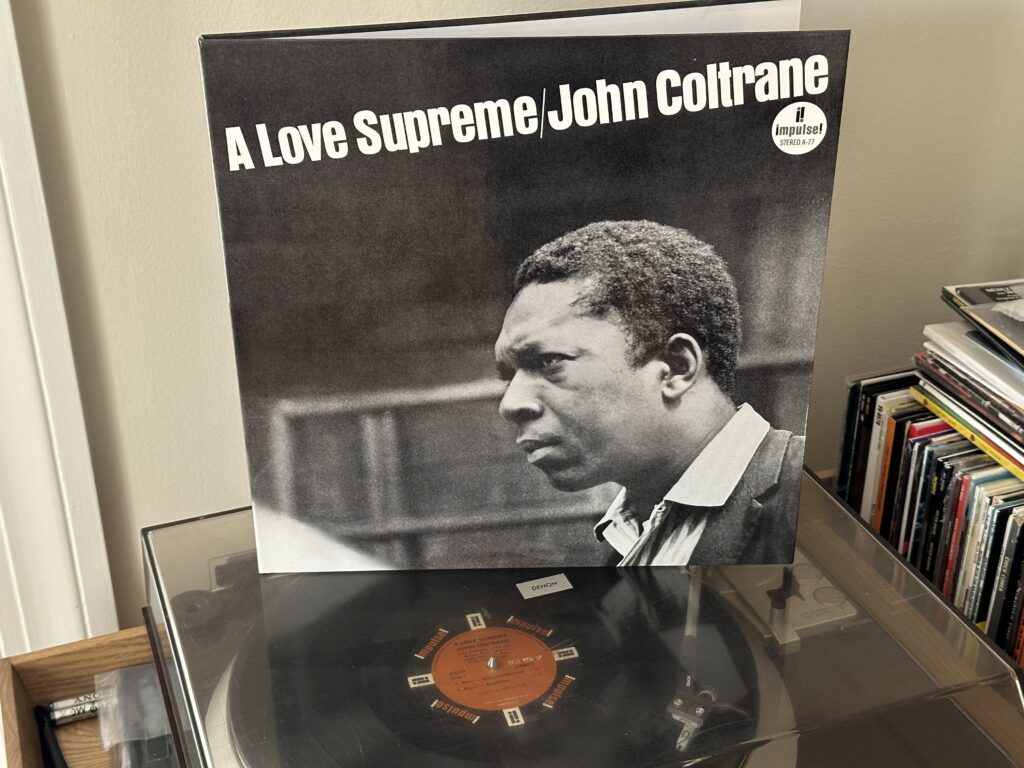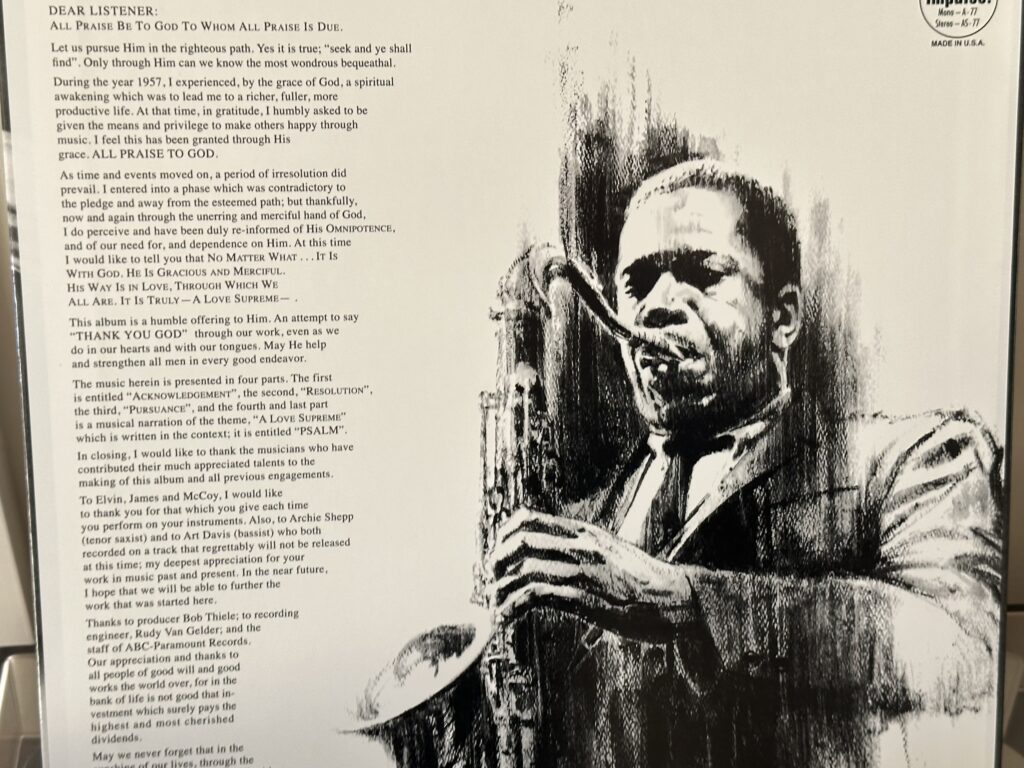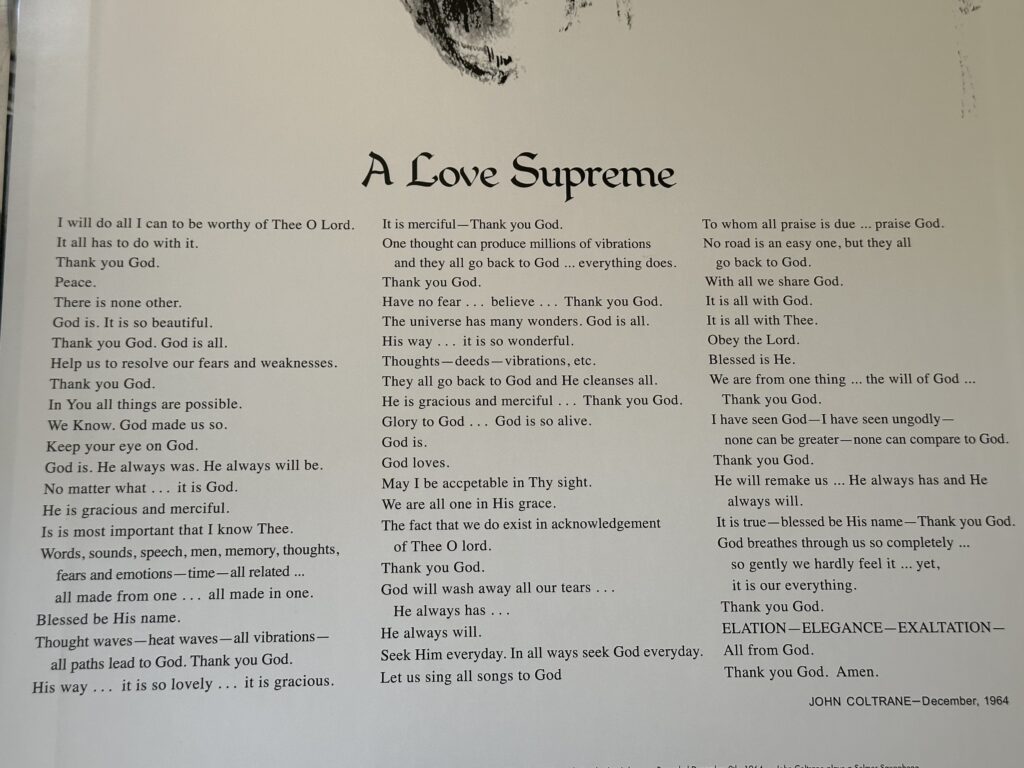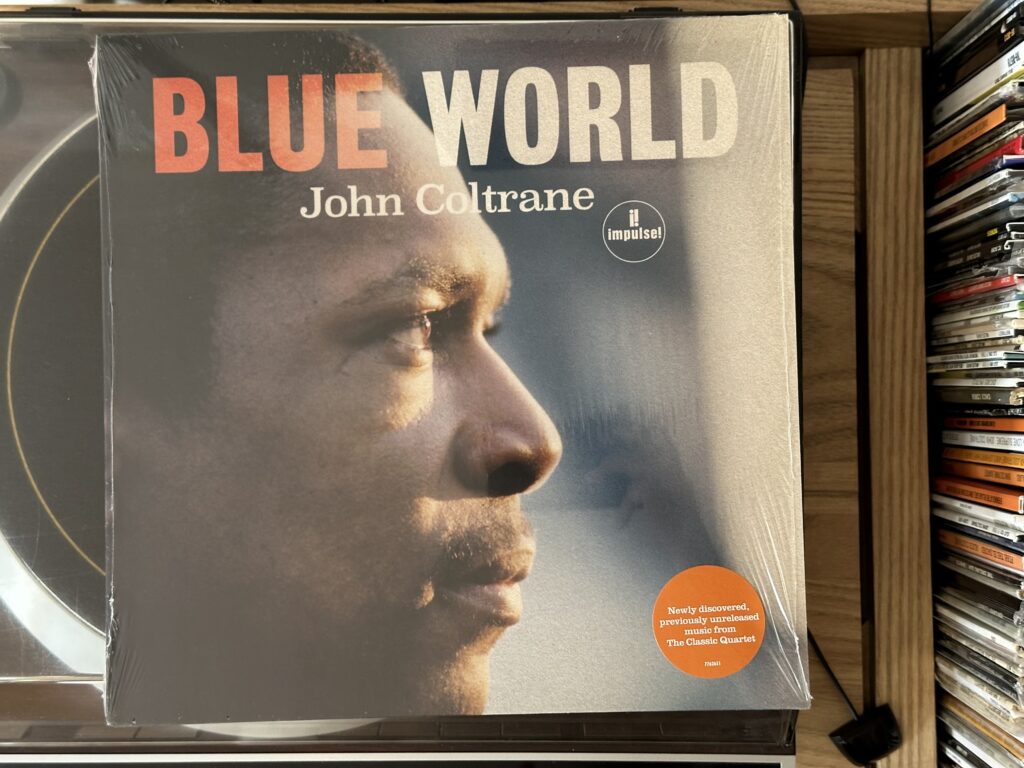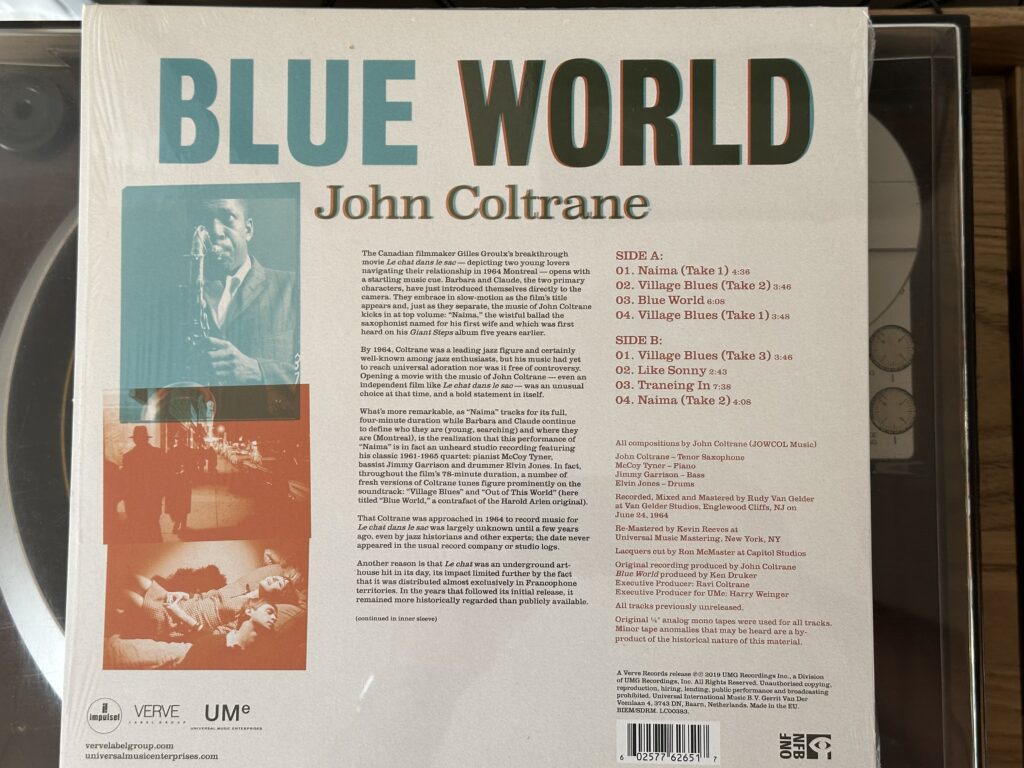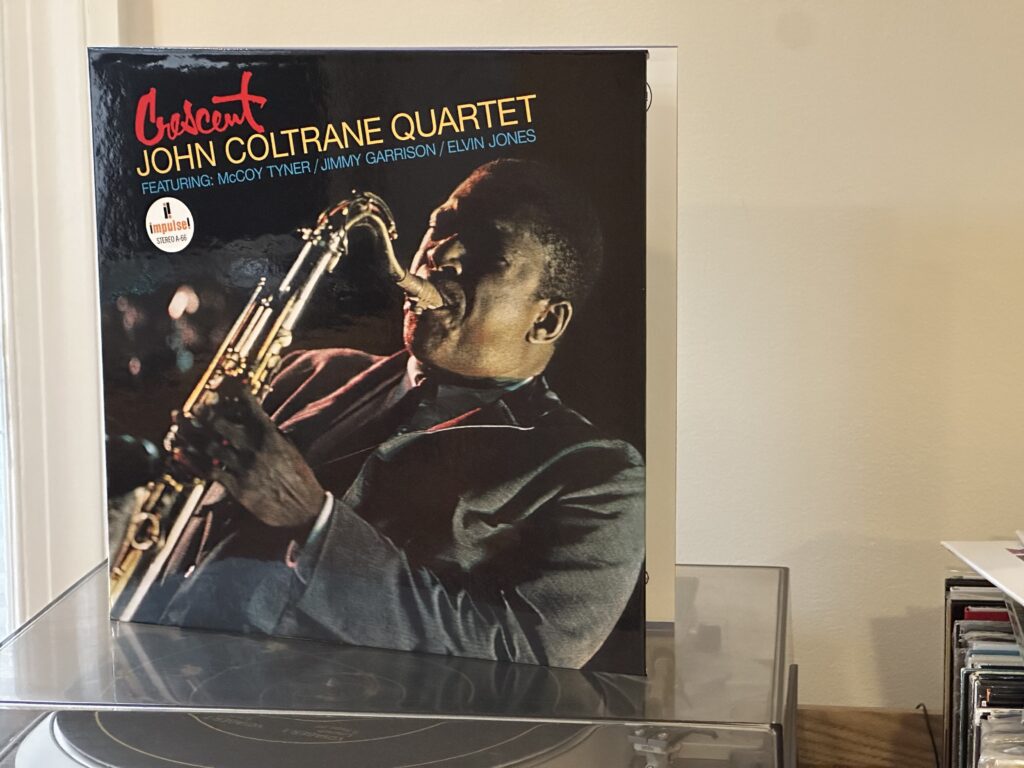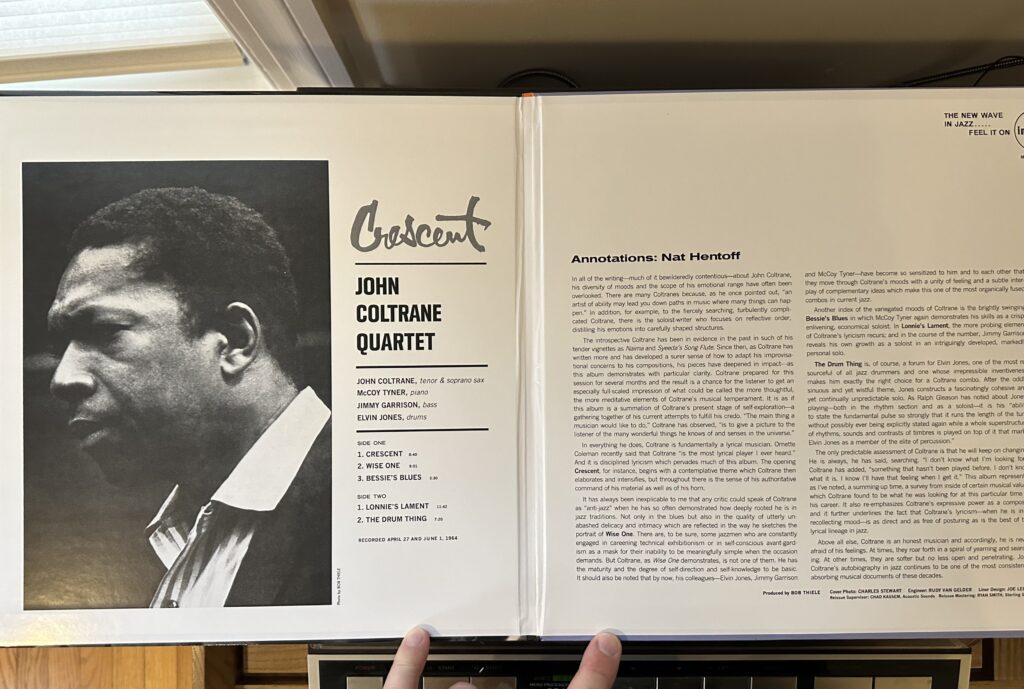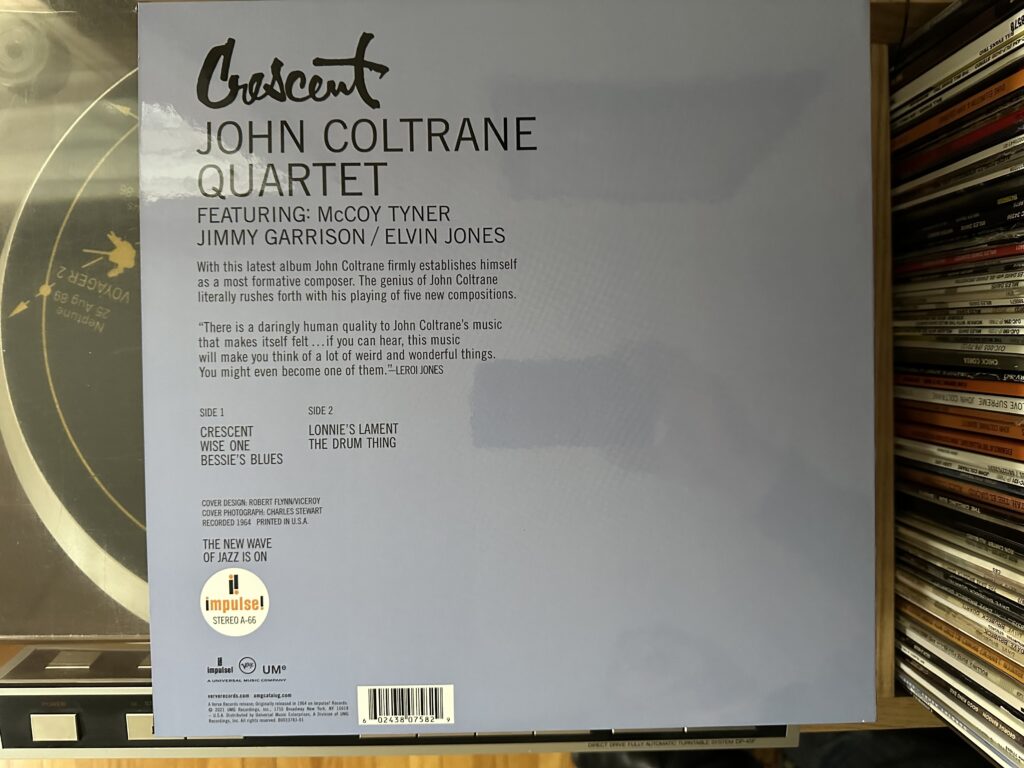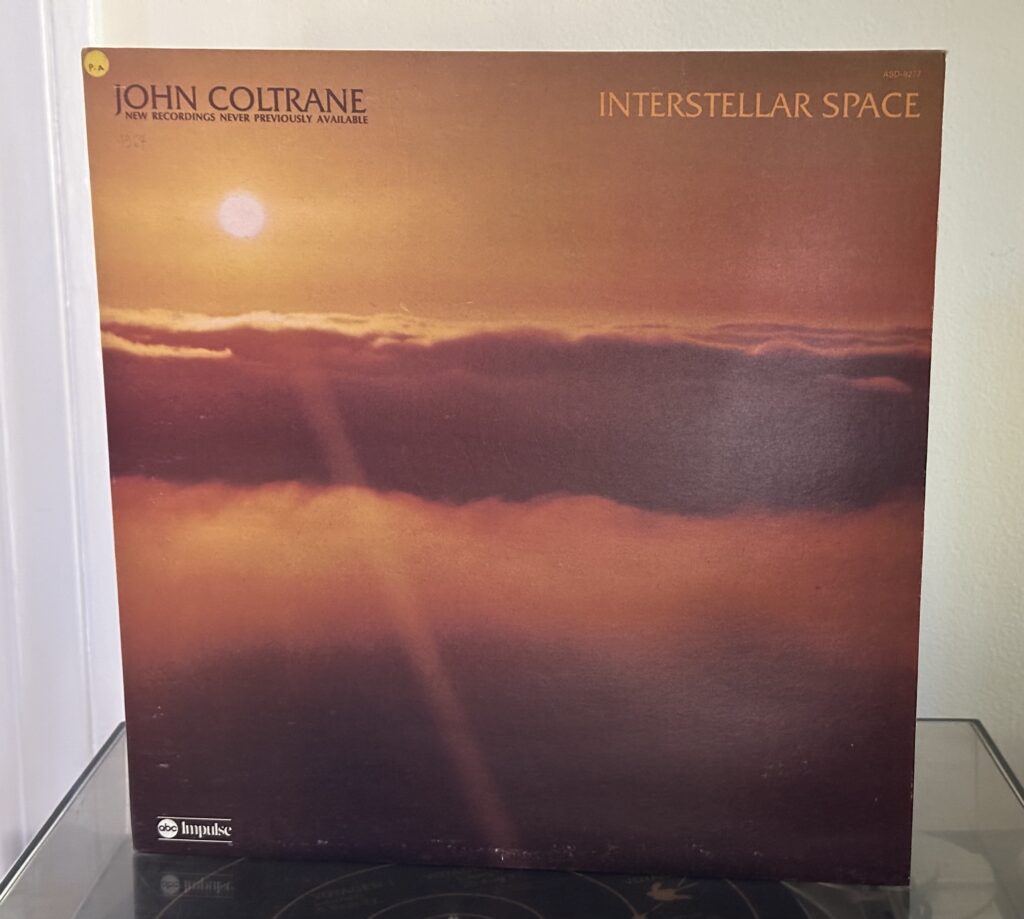
Album of the Week, May 25, 2024
When I think about the final years of John Coltrane’s life, of the flurry of recording sessions from the end of 1965 to his death in 1967, many of which would not see the light of day until years afterward, I am reminded of Anne Sexton’s poem: “The story ends with me still rowing.”
In February 1967, a week after he played on the recordings that resulted in the posthumous albums Expression and Stellar Regions, Trane’s new regular drummer Rashied Ali drove with his friend Jimmy Vass to Rudy Van Gelder’s studio in Englewood Cliffs, expecting to record a session with the band. (Ali, another Philadelphia player, had joined Trane on Meditations, after studying with Philly Joe Jones and playing with Sonny Rollins, Bill Dixon and Paul Bley). But when they arrived at the studio, no one was there. Biographer Ben Ratliff relates:
“Ain’t nobody coming?” [Ali] said to Coltrane.
“No, it’s just you and me.”
“What are we playing? Is it fast? Is it slow?”
“Whatever you want it to be. Come on. I’m going to ring some bells. You can do an 8-bar intro.”
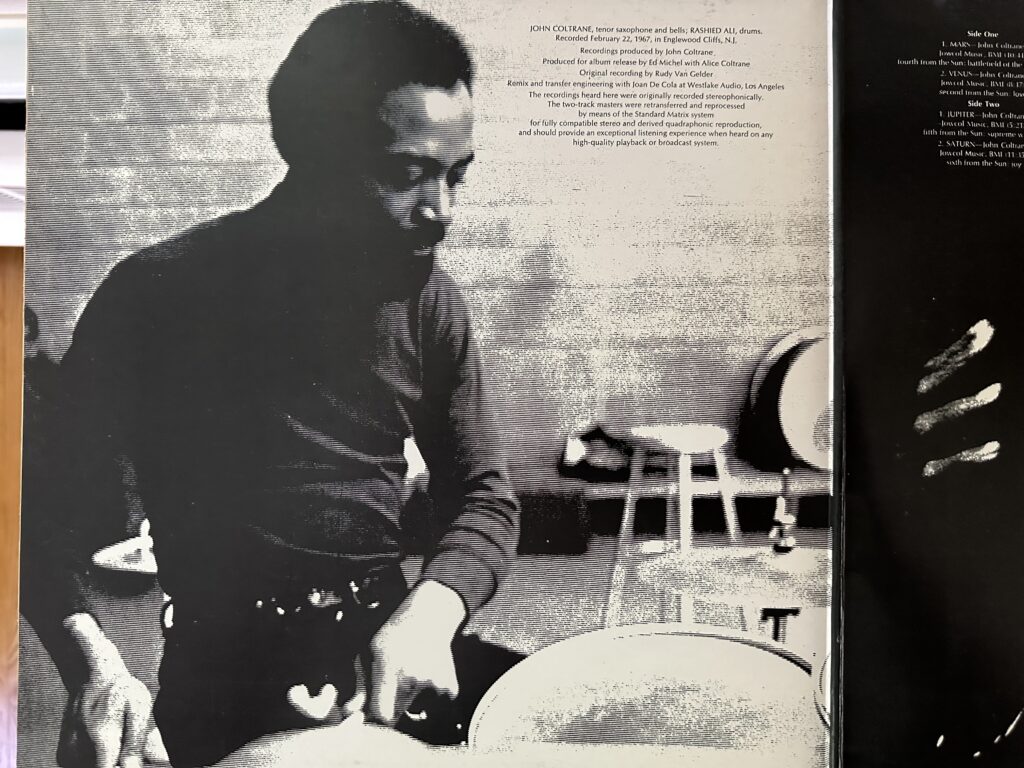
Though everything was recorded with no rehearsal and in only a single take, the opening track, “Mars,” sounds as though it burst fully formed from Ali and Trane. With an opening invocation on shaken sleigh bells, Trane seems to be summoning all the gods at once. Ali answers with a mighty crash of drums, and then Trane enters with a four note theme (I – IV – IIIm – I) that he immediately begins improvising on. Ali does not stick to a single rhythm, offering Trane the flexibility to sing (and scream, and chant) through his saxophone in whatever rhythm he wants. Which is not to say that Trane performs in an unstructured way. Free from conventional meter, he responds by constructing his own patterns from the basic repeated rhythmic motif, which, as in the beginning of A Love Supreme, he explores in multiple different tonalities, seeming to circle the harmonic wheel until he exhausts it, then taking a break and turning once more to the bells. Ali burns out his drums with relentless polyrhythms, accompanied by Trane on bells, to the end of the track.
The opening of “Venus” picks up where “Mars” left off, only instead of burning out on the drums, Ali seems to speak to the bells with cymbals and short bursts of the snare, as Trane plays… a melody? Here we get Trane the inspired balladeer, only instead of a standard or even the tender originals on Crescent, here he seems to be playing a hymn of love and praise. This isn’t a soppy love ballad; indeed, after the initial statement it seems to rise in ecstatic chanting, slowly escalating through different keys until it reaches a fever pitch. But Trane somehow lands the plane, bringing it back down from that plane of intensity into a finish that would have been at home on Lush Life.
Another invocation of the deity opens “Jupiter,” and this time Ali seems to call for the skies to open with crackling snare work. Trane’s melody here sounds a bit like something from Sun Ship, and as before, he creates a structure around him, this time with descending sheets of sound and a riff around a descending minor second. Following this he seems to take off, ascending into the highest reaches of his horn, then creating new noises as he pushes beyond. As if pulled down by Jupiter’s massive gravity, he descends again, then slingshots backup to the opening orbit and beyond in a soft chorus of bells.
Ali’s drums seem to search across the emptiness of space at the opening of “Saturn,” bursting with small pockets of life separated by irregular stretches of silence. He settles into a loping beat in which Trane’s saxophone finds, improbably, a bluesy waltz. The tune serves as a jumping off point for Trane to circle the center of chaos once more, alternating between flights of tonality and bursts of ecstatic wailing. At one point, his searing bursts of notes seemingly leaving vapor trails, he wanders away from the microphone for just a minute, as though his relentless searching is finally causing him to pull away from this plane of existence. But he circles back, snaps into the tune once more, and seemingly reveals the boundless exploration to have been bounded within this earth after all.
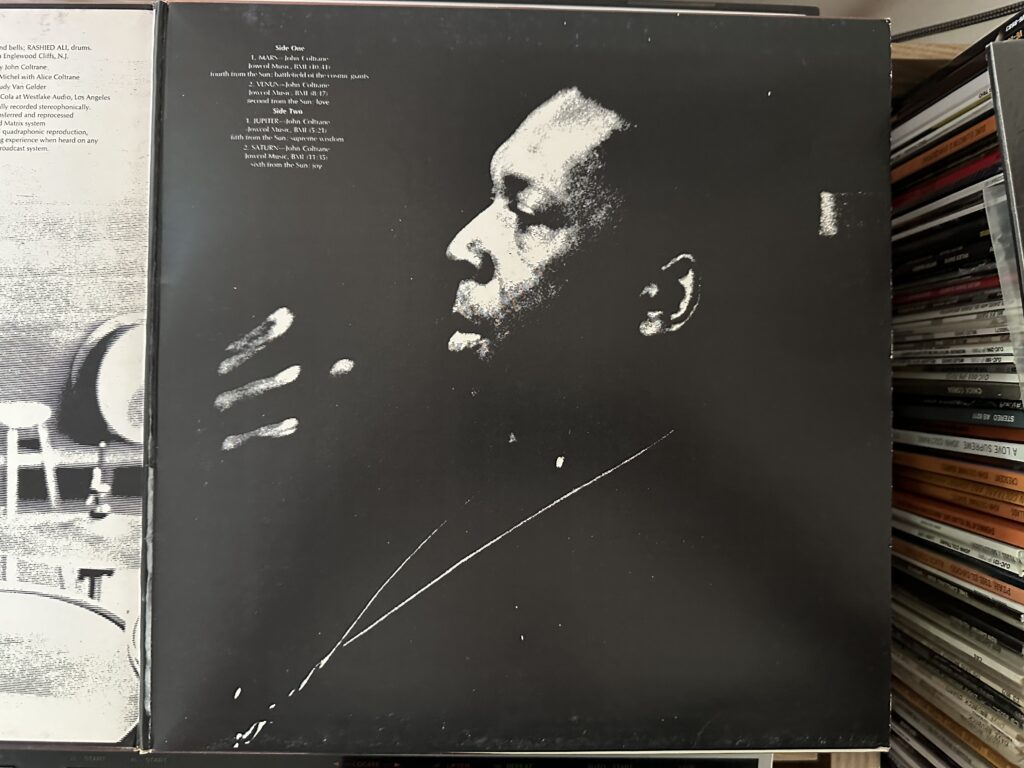
And so, with the utmost regret, we come to the end of our exploration of the music and influence of John Coltrane. And as we have heard today, no matter how far out his disciples got, Trane had already gone there, and farther. Were it not for the liver cancer that claimed his life at the age of 40 just five months after this recording was made, one wonder just how far out he would have gone. But in recordings like Interstellar Space, we get to hear how he brought together all the strands of his musical curiosity, from sheets of sound to intense lyricism to improvisation without a net to, above all, the endless search, and practiced them up until the very end.
We can continue the journey no further, so next week we’ll move onto something completely different. In the meantime, you can listen to this week’s album here:
Note: CD versions of Interstellar Space contain two additional tracks: a rendition of “Leo,” which would feature in many live recordings in the last 18 months of his life, and a longer version of “Jupiter,” called “Jupiter Variations.” The original release, constrained to the duration of an LP, contained only the tracks we’ve reviewed today.
